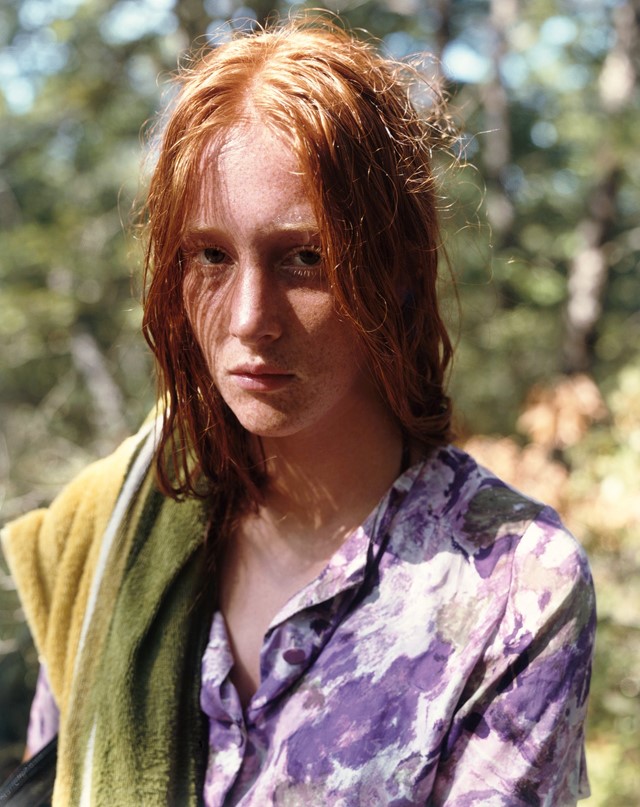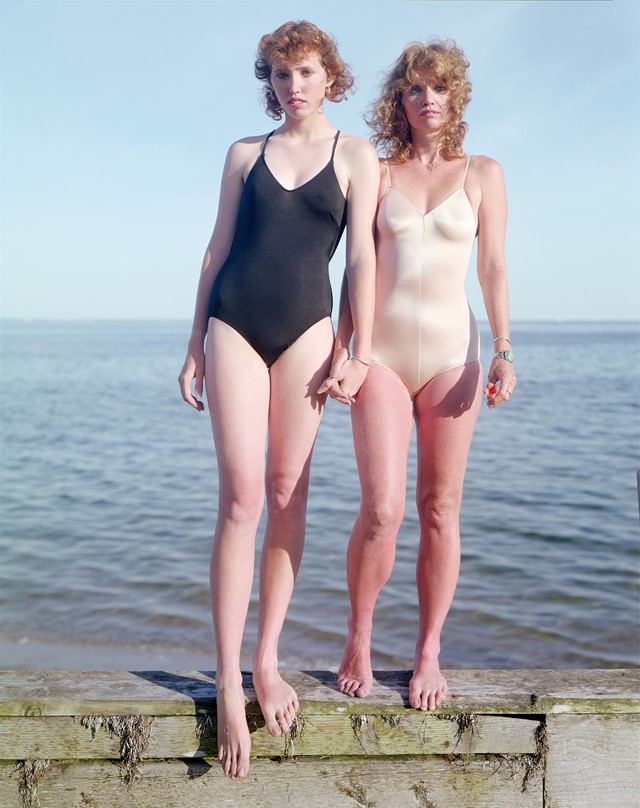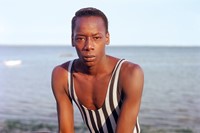A new book from Joel Meyerowitz features portraits taken in 1980s Provincetown, many of which have not been published before. Here, the legendary photographer tells us the story behind these arresting photographs
Joel Meyerowitz’s first photography book, Cape Light, documents the landscapes of Cape Cod, the hook-shaped stretch of Massachusetts coastline that curves out into the Atlantic Ocean. Originally published in 1978, the book remains one of the Bronx-born image-maker’s most enduring publications. Over 40 years later, and Meyerowitz’s new book Provincetown hones in on a small town on the northeasternmost tip of Cape Cod, featuring a series of portraits taken in the resort town.
One of the earliest pioneers of colour photography, Meyerowitz began taking to the streets of New York with a 35 millimetre camera in the 1960s. The portraits in Provincetown were taken in the early 1980s, when he had been experimenting with a large-format camera and portraiture for a few years. “In 1973, -4, -5, I was going through a big change in my work,” Meyerowitz says over the phone from Tuscany, where he mostly lives now. “I kept on demanding greater visual description because I wanted to make very large-scale prints. Since I was a street photographer, large-format photography wasn’t in my vocabulary. I found a large scale eight-by-ten inch wooden camera and I decided to try it for a summer.”
Known for its LGBTQ-friendly community – “it’s at the end of Cape Cod, and when you go to the land’s end, it’s as if everybody there learns to be tolerant and accepting and absorbing,” says the photographer – Provincetown provided ample subjects for Meyerowitz’s venture into portraiture. Though he was diverging from his usual street photography, a certain spontaneity stayed with Meyerowitz in his approach to making portraits. “If I saw anyone that had some kind of projection of their humanity or interiority in some way, I was drawn to them,” he remembers. “I would cross the street or walk over the sand and say ‘I need to make a portrait of you’. When I presented it that way and I had this six-foot-tall camera next to me, made of wood with a dark cloth hanging off of it and looking 19th-century, people were slightly stunned.” He eventually ended up with “several thousand portraits of strangers”, and most of the 100 that appear in Provincetown have not previously been published.

Using eight-by-ten inch film, Meyerowitz would generally make one photograph of each subject. (An exception can be seen in the portrait on the cover of Provincetown of Darrell, a dancer, whom Meyerowitz captured standing up and once again crouched down, because “suddenly when he squatted he became a different kind of animal, as if he could pounce in some way” that was irresistible to the photographer.) Having studied portraits by Richard Avedon, Irving Penn, Eugene Atget, and August Sander, he knew his approach would have to differ. “I could see someone like Dick Avedon, who worked in a studio, would make 50, 60 sheets of film and was working for a couple of hours until he broke [his subject] down. I was working outside in daylight, no studio control, and I had to approach a stranger and ask if I could take a few minutes of their time,” he says.
“And what did I want from that interaction? I realised what I wanted was to see if my way of being would calm them down to such a place that they could give up their secret inner selves. And what I think you see in the photographs is people who are being vulnerable to a stranger. They’re showing something of their mystery, or their essence.” The process – which would last a matter of minutes; “it is instantaneous, but it’s a long instant” – became about capturing a moment of authenticity. “When I make the picture, I’m no longer behind the camera. I’m standing aside, and it’s just them and the camera. I’m watching them and I would speak to them, and finally something would happen – I will see that flash of reveal. The picture is about me: it uses them as the subject but I am determining when I think they have appeared in some way that is meaningful or special, beautiful, shy. I mean, it’s an amazing human interaction.” Small landscape shots of Provincetown appear among the portraits, hinting at the place these people lived in.

Aperture, the book’s publisher, originally approached Meyerowitz about a book on 1980s style, but the soulful document of Provincetown’s people goes beyond the fashions of the decade. With many of the portraits taken at the cusp of the Aids crisis, there is an optimism about the images that belies the hardships borne by the LGBTQ community, many of whom are captured in Provincetown. “The Provincetown scene was a wild party scene. Nobody knew the consequences yet,” remembers Meyerowitz. “I think there was a kind of innocence back then – now we’ve lived through basically 40 years of people being out and really expressing their sexual preferences – and along came the dangers and pain of that.”
Ultimately Meyerowitz was seeking “moments of clarity”, which for him required a certain interiority. “I guess that’s what these pictures represent for me. The ones I chose seem to convey the identity of these people in a very tender and vulnerable way.” Look closely at the captivating portraits of Darrell in the pages of Provincetown and on its cover, and his “what he called ‘shit-faced eyes’, which were just blood-shot eyes, from partying too much the night before” are just clear. Meyerowitz’s processes allowed for an openness from his subjects, resulting in beautiful and arresting portraits. “I just wanted humanity. A simple sense of who this human being is that is the other for me,” he concludes. “And I think it shows that we’re all human. We’re just human beings, and we’re strange and beautiful and interior and no matter what our sexual preferences are, this is what we look like.”
Provincetown by Joel Meyerowitz is published by Aperture.






